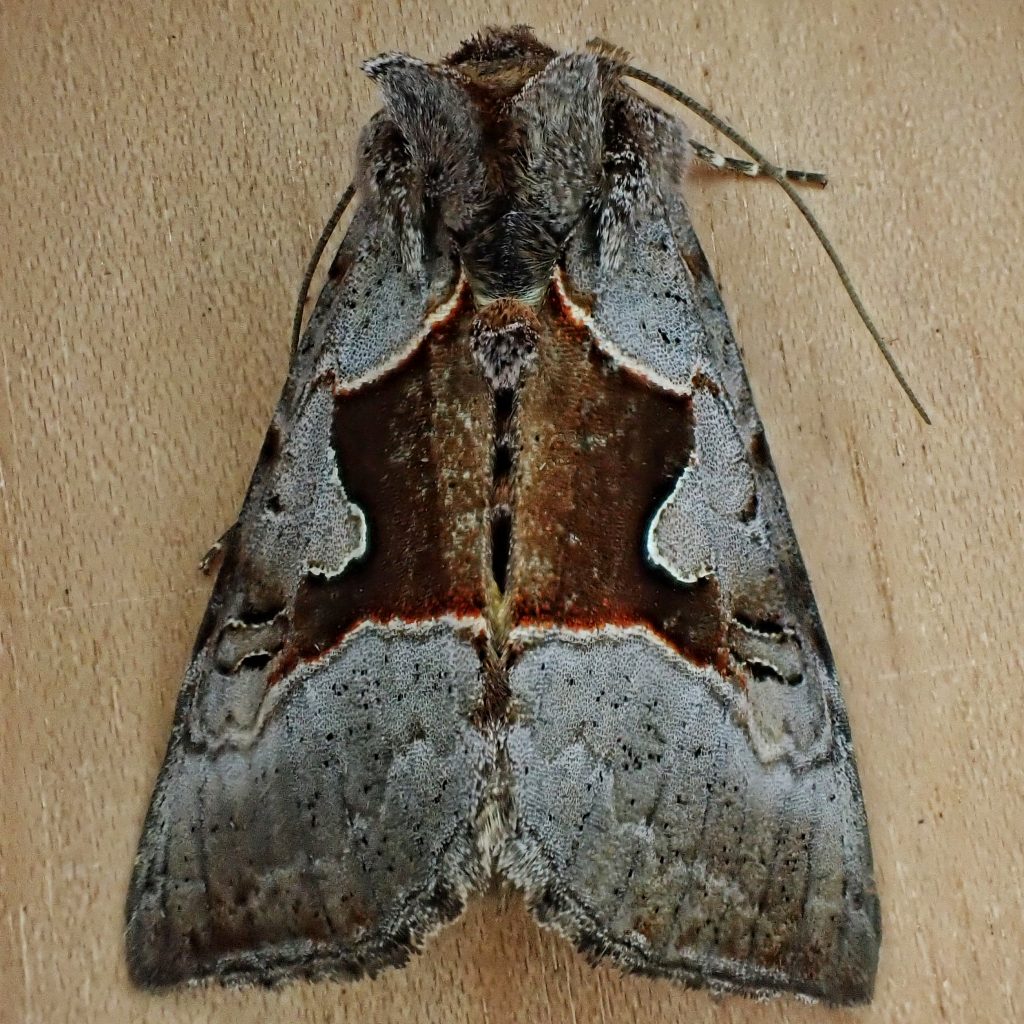
For the 4th of July weekend I went camping/mothing with my friend Craig Sondergaard and his grandson William. Our destination was a place we call, simply, The Ridge, a very cool subalpine ridgeline that separates the watersheds of the E. Fork Lewis, N. Fork Lewis, and Wind rivers. We had a fun and productive trip, both in terms of bugs and botany, and the processing of the photos and specimens has occupied almost every free moment of the last week, which is why I haven’t been posting any profiles.
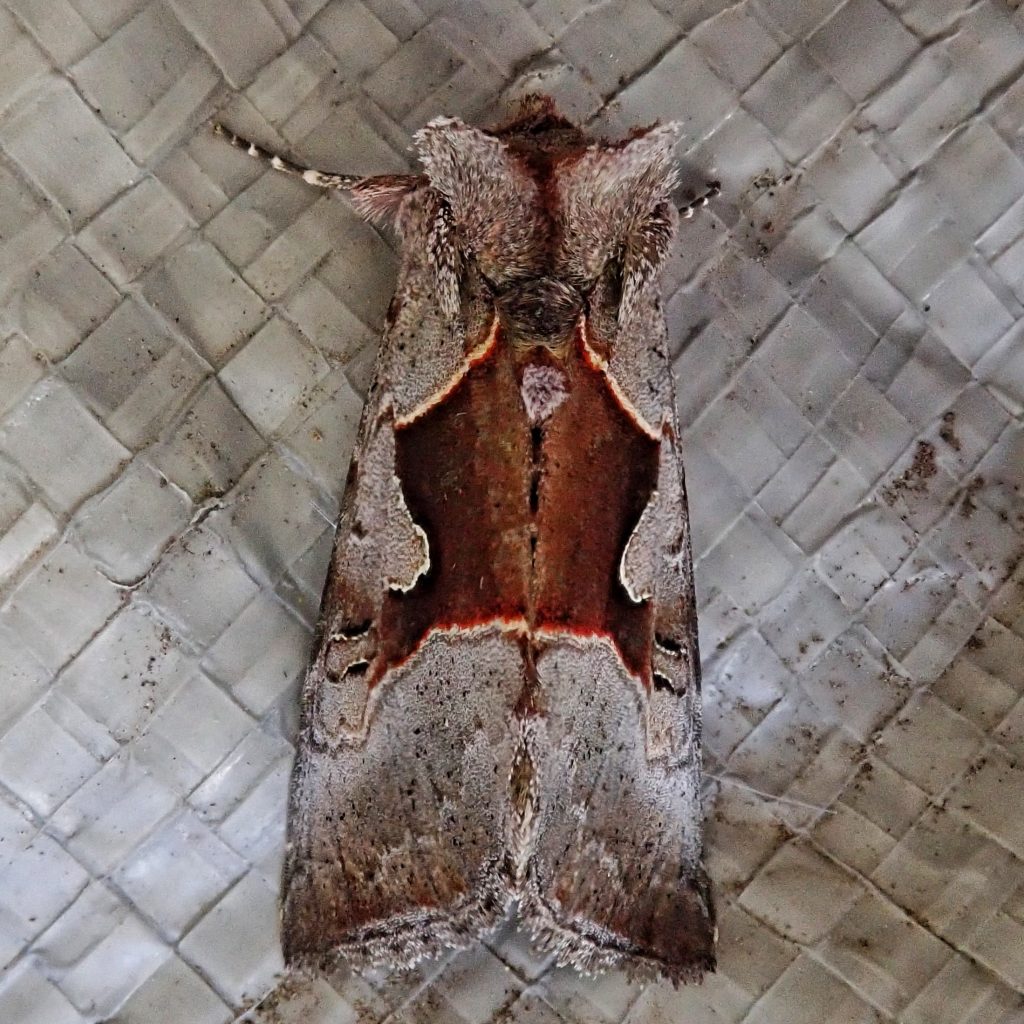
I said camping and mothing, but I don’t do much camping on a trip like this, if by camping one means sitting around a fire, cooking outdoors, and sleeping in a tent. I seldom build fires because fires must be watched, and I prefer to roam. I don’t cook because I often forget to eat for long periods, and granola bars, jerky, string cheese, fritos, and peanuts require no preparation. And I should sleep more but I get so excited to be out there in the wilds, checking the lights for new arrivals and generally just digging on wandering about in the nighttime forest, that I have to allow exhaustion to put me into a coma, from which I invariably emerge shortly after sunrise to guzzle a cup of iced tea and stumble out to see what other nocturnal creatures showed up in my absence.
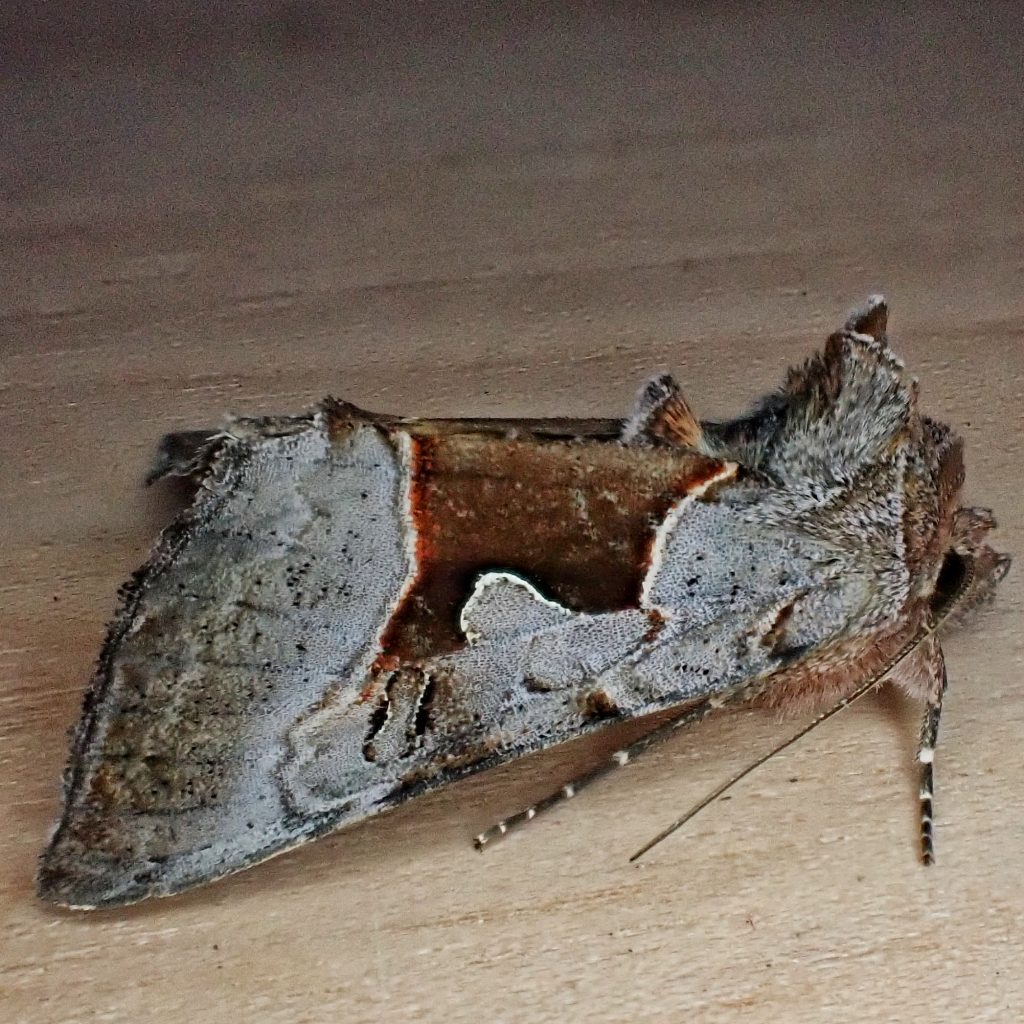
This time the only addition to the species list that showed up between my last round at 2:30 and my next check at 5 was this Syngrapha orophila (family Noctuidae), but it was a welcome addition indeed. I had never found one before, since I don’t do nearly as much subalpine mothing as I’d like to, and at first I thought it was Autographa ampla (the raspberry looper, which I had also never found, but had seen pictures of), until it flashed a bit of yellow hindwing. A bit of paging through the moth section of ‘Pacific Northwest Insects’ and I found something that looked right, and further research showed that it was indeed Syngrapha orophila. For me it is always worth giving up sleep for a lifer moth, and that possibility is exactly why I leave my lights burning all night, and return at dawn.
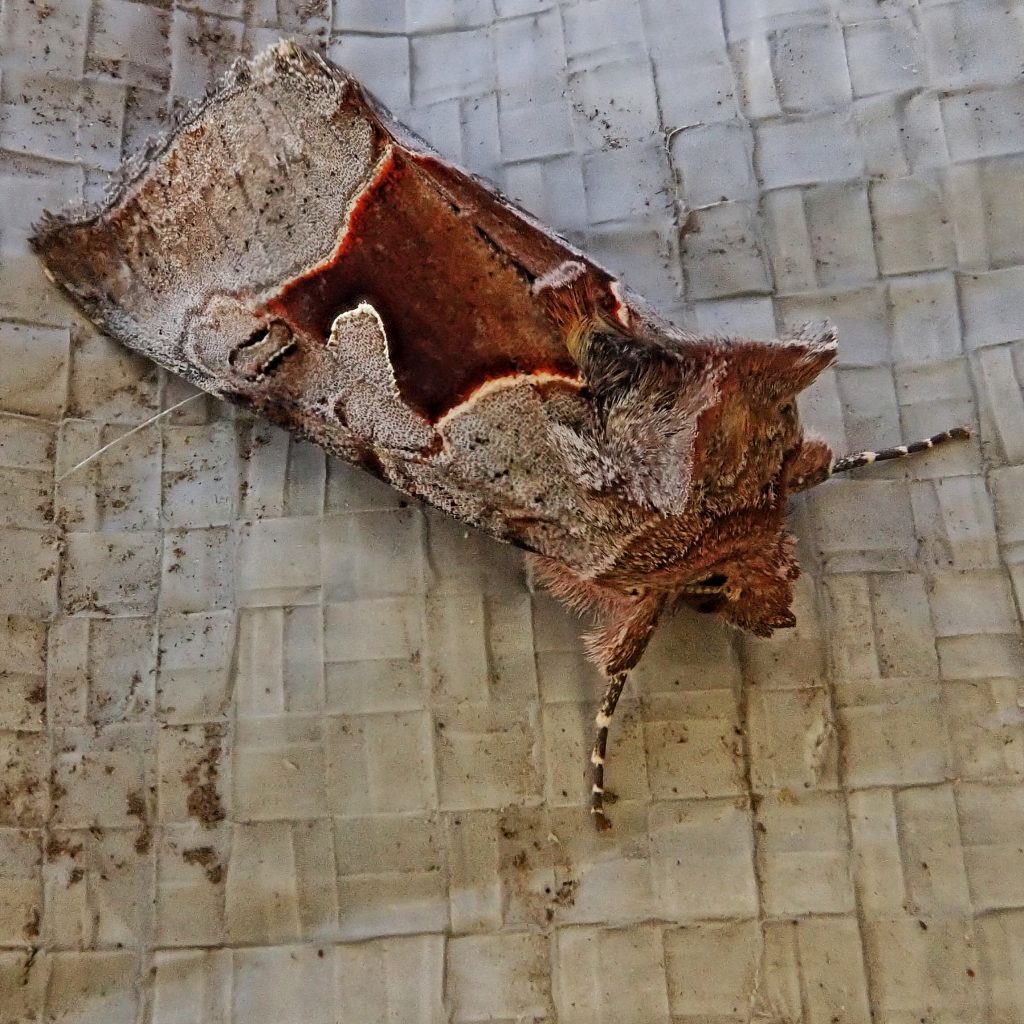
Description– Medium sized (16-19mm) grey moth with a large, well delineated brownish black patch that has whitish or pale brownish yellow borders in the median area on the trailing half of the forewing; hindwings are yellow with a black border; thorax has a large tuft of grey hairs.
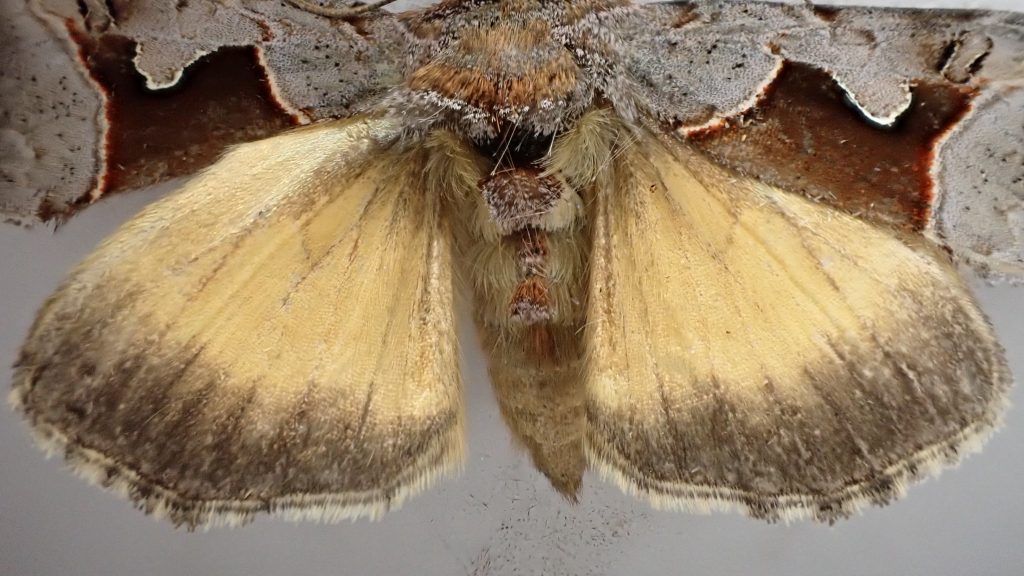
Similar species–S. borea has a yellow spot near the anal angle of the forewing and brown, rather than grey, tuft of thorax hair; S. diadematus has a tan hindwing and is only found in BC; S. epigaea and Autographa ampla have grey brown hindwings.
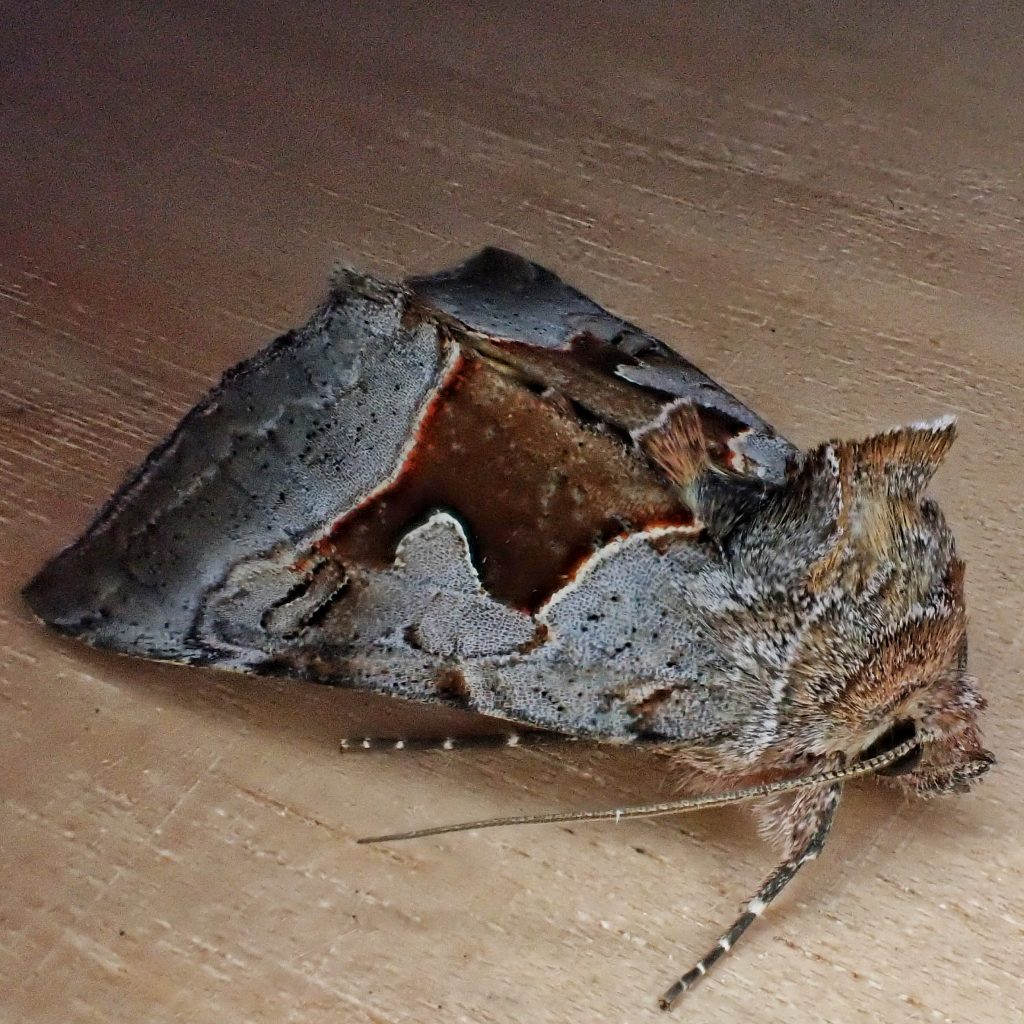
Habitat-Subalpine spruce-fir forests
Range-Northwestern North America; found in the Rockies as far south as s Idaho, and the Cascades, Blues, Siskiyous and Olympics.
Eats– Larvae feed on Vaccinium (huckleberries and blueberries).
Eaten by– Insectivores of all classes
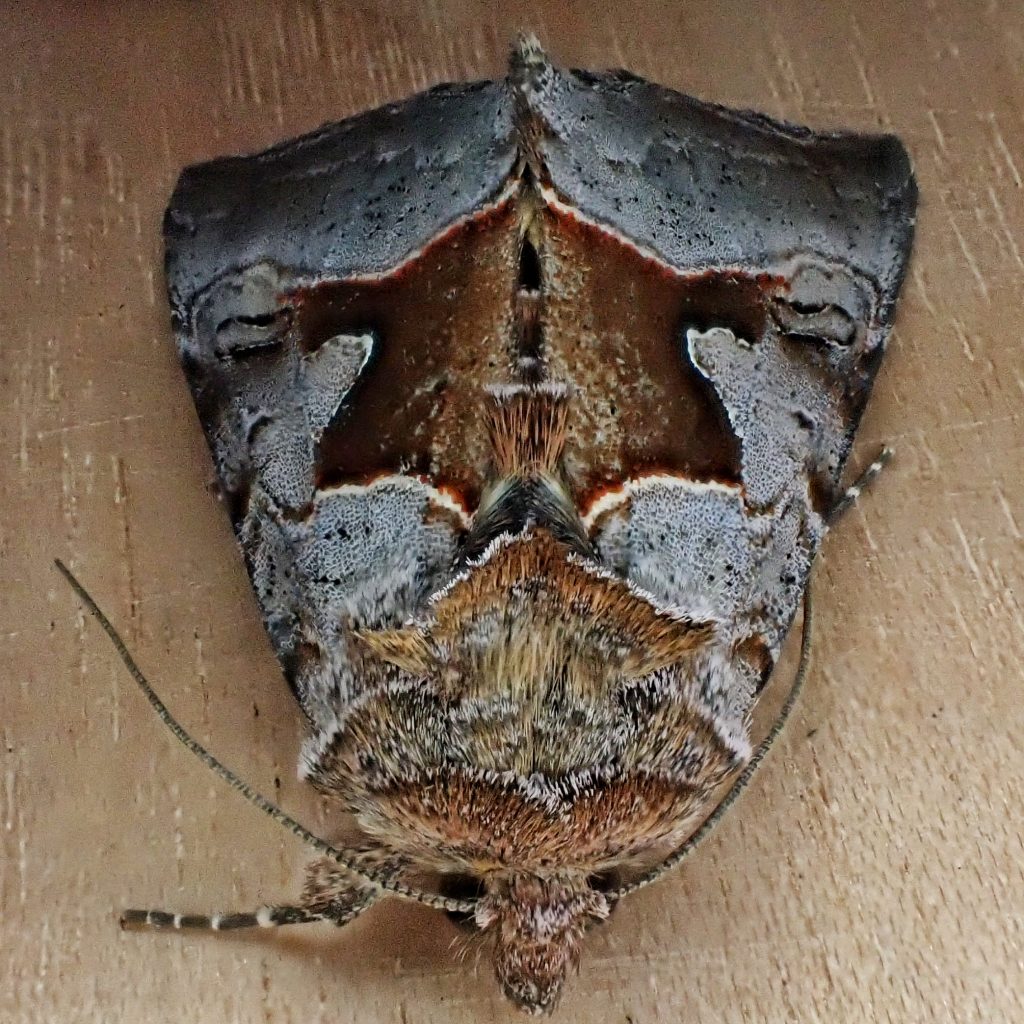
Reproduction-Univoltine; overwinters as pupa
Adults active-Mid June to early September.
Etymology of names–Syngrapha is from the Greek and means ‘with’ and ‘writing’. It references the genus Autographa , the first described of the many genera in the tribe Plusiini that bear -grapha as part of the generic epithet and have wing markings that look similar to a written letter. The specific epithet orophila is from the Greek for ‘mountain lover’, and references the preferred environment of these moths.
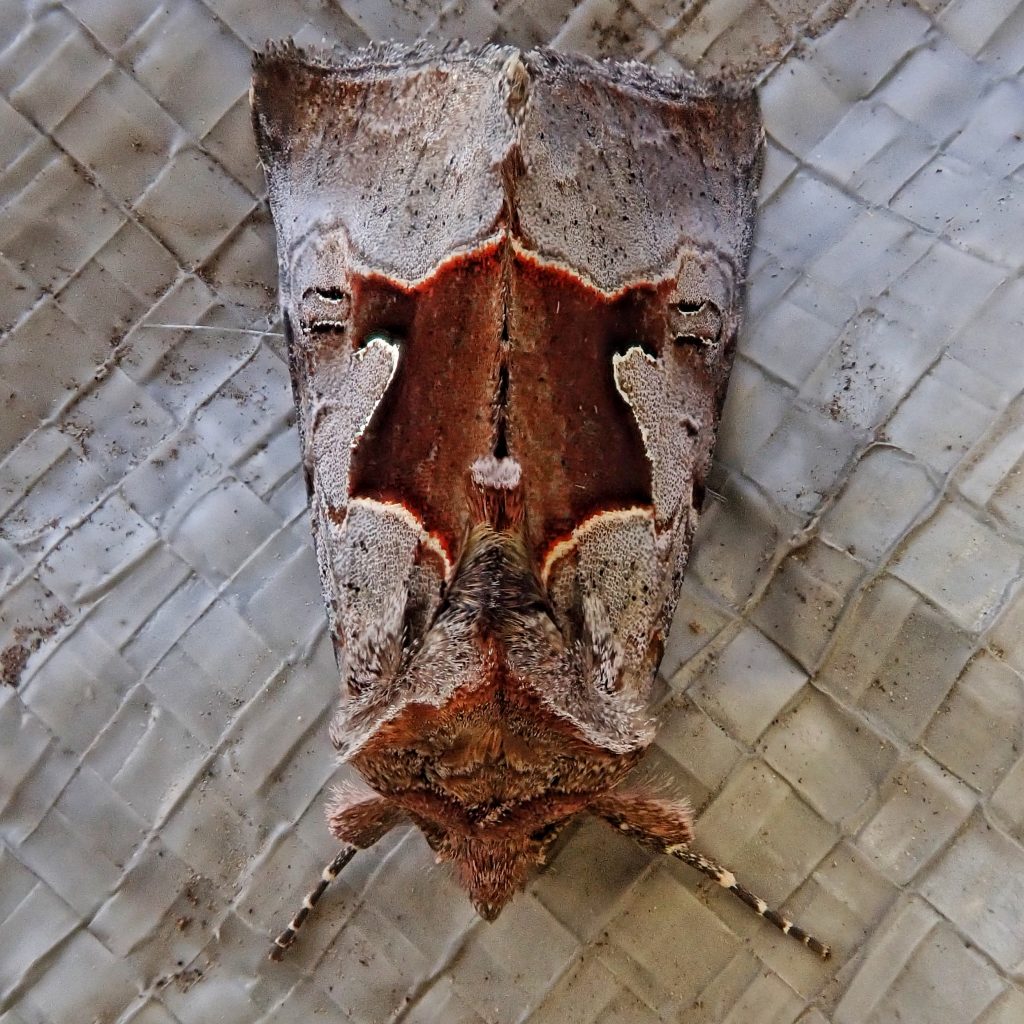
https://bugguide.net/node/view/68500
http://mothphotographersgroup.msstate.edu/species.php?hodges=8930
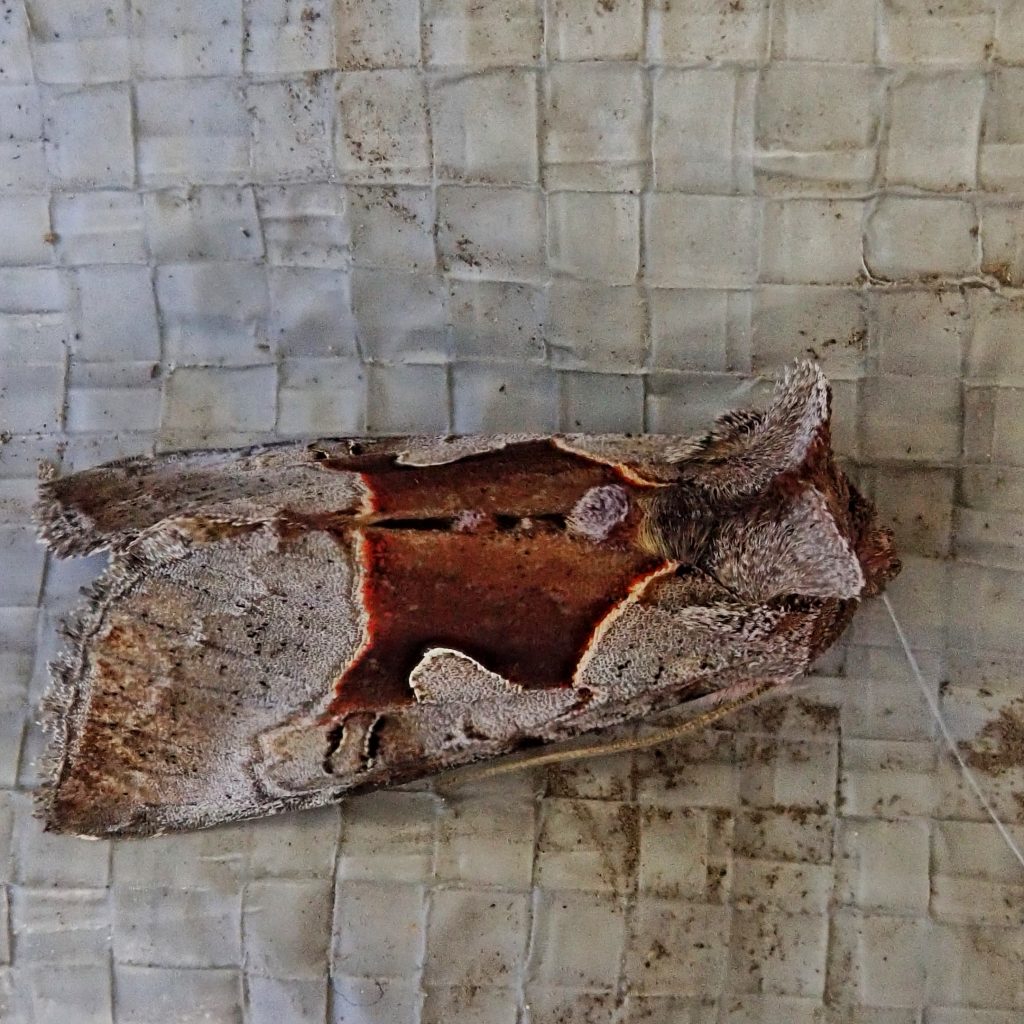
I have it from ONP.
Cool! I will correct that!